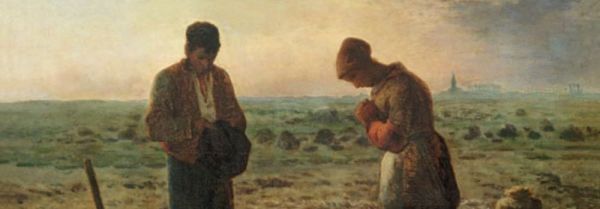Freed from automatic mentality
(Lk 4:31-37)
In the third Gospel, the first signs of the Lord are the quiet escape from the threats of death [waved by his people!] and the healing of the possessed.
In this way of narrating the story of Jesus, Lk indicates the priorities that his communities were living: first of all, there was a need to suspend the intimate struggles, inculcated by the Judaizing tradition and its 'knowing how to be in the world'.
In the stubborn and conformist village of Nazareth, the Master is unable to communicate his newness, and is forced to change residence.
He does not resign himself, on the contrary: Capernaum was at the crossroads of important roads, which facilitated contacts and dissemination.
Among people from all walks of life, the Son of God wanted to create a consciousness that was highly critical of the homologated doctrines of religious leaders.
He did not mechanically quote the - modest - teachings of the authorities, but started from his own life experience and living relationship with the Father.
He did not seek support, neither for safe living nor for the proclamation - thus he created clear minds and an unusual quiver.
In this way, he suspended in souls the usual doubts of conscience, the usual battles inoculated by the customary-doctrinal-moral cloak, and his inner lacerations.
In a transparent and totally non-artificial manner, Christ [in his] still escapes evil and struggles against the plagiarising, reductive forces of our personality.
In the mentality of automatisms devoid of personal faith, it seemed at the time that one almost had to submit to the powers of external conviction.
All this to avoid being marginalised by the 'nation' [and by groups governed by conformity].
This also applies to us.
The duty to participate in collective rituals - here the Sabbath in the synagogue - risks dampening the intimate nostalgia for "ourselves" that provides nourishment for vocational exceptionality.
Originality in the history of salvation which, on the contrary, we could become, without the ball and chain of certain rules of quiet living, to the minimum - rhythm of customary social moments and symbolic days [sometimes emptied of meaning].
(All in the scruffy, mechanical ways that we know by heart, and no longer want, because we feel they do not make us reach a higher level).
The Master in us still faces the power that reduces people to the condition of ease without originality: a grey, perpetual trance allergic to differences.
Apathy that produces swamps and early camps, where no one protests but neither is surprised.
In the Gospel, the person who suddenly sparks sparks was always a quiet assembly-goer, who wearily dragged his spiritual life in small, colourless spheres, lacking in breadth and rhythm.
But the Word of the Lord has a real charge in it: the power of the bliss of living, of creating, of loving in truth - which does not hate eccentric characteristics.
Where such a call comes, all the demons you don't expect are unmasked and leap out of their lairs [previously simulated, agreed upon, artificially homologated].
He who meets Christ is knocked off his abstemious seat, turned upside down on the spot; he sees his certainties thrown to the wind
Reversal that allows hidden or repressed facets to play their part - even if they are not 'as they should be'.
In short, the Gospel invites us to embrace all that is within us, as it is, unmitigated; multiplying our energies - for within lurks the best of our Call to personal Mission.
In Christ, our multifaceted [albeit contradictory] faces can take the field together, no longer suppressing the precious territories of soul, essence, character, of another persuasion - even a distant or unrepeatably singular one.
The habitué of the assemblies is indeed disturbed and questioned, but at least he does not remain dumbfounded as before: he makes a conspicuous progress from the slumbering and ritual existence - bent, repetitive, dull and fake.
He is freed face to face from all the propaganda and clichés that previously kept him quiet, subjugated, on the leash of the 'authorities' and the conservative environment that repelled all enthusiasm.
The dirge of sacred place and time was a litany that all in all could stand, but the critical proposal of Jesus restores consciousness and freedom from inculcated territories, instilling esteem, capacity for thought and will to do.
Now no longer on the sidelines, but in the midst of the people (v.35).
From the weariness of purely cultic habituation, and even through a protest that breaks apathy, the divine Person and his Call awaken us.
They compel us to a saved life of new witness that seemed impossible.
Unceremoniously and to make us run free of the hypocrisies concealed within, the Lord also pulls out of us all the rages, the disagreements, the soul-quenching alienations.It is no longer enough to make a number [lined up and covered up], we must now choose.
The difference between common religiosity and living Faith? The wonder of a deep, personal, unexpected Happiness.
In fact, away from habitual and mental burdens, we extinguish wars with ourselves and go hand in hand even with our faults - discovering their hidden fruitfulness.
To internalise and live the message:
Has the encounter with the living Jesus in the Church freed you from forms of alienation and restored you to yourself, or has it made you go back to asking for support, sacred confirmation, and quiet - as if you were frequenting a relaxation zone?












